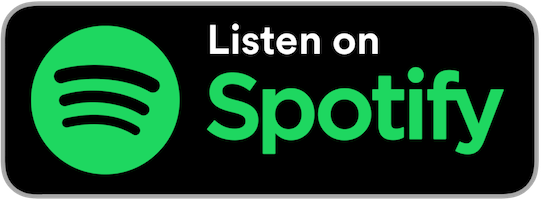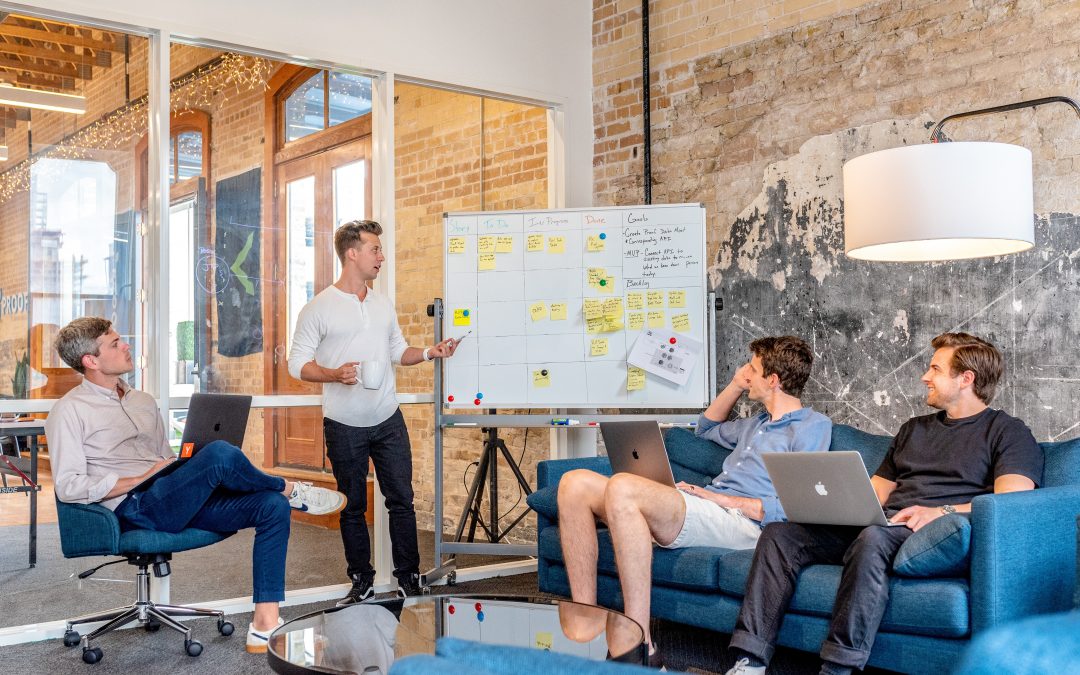
5 Steps for Forming New Habits (and What to Do When You Want to Quit)
Many of us want help forming new habits in our lives but are confronted by fluffy, inspirational “advice” when we research how to really make a habit stick.
The problem is, while inspiration is great, inspiration alone just isn’t enough. In addition, you need an actionable plan that accounts for your ups and downs during the habit-building process.
This 5 step habit-formation process will protect you from your stupid brain, who’s almost certainly going to try to stop your new habit from forming.
Step 1: Choose Your Goal
It takes 66 days to form a habit. What new outcome do you want to see at the end of that time?
When choosing a new goal, remember that it needs to be both measurable and doable. For instance, if your goal is to get healthier by working out 2 hours every day, that is measurable, but probably NOT doable.
When choosing a goal, ask yourself a few questions to design your new habit around your life, so it’s easy to adapt long-term:
- Which days are your “on” days?
- Which days are your “off” days?
- How much time do you really have to set aside for this?
- What materials do you need?
When you think about the reality of your week, you can almost see where the new habit will fit into things.
Now, you’ll be inspired when you set your goal, but life tends to get in the way of execution sometimes. That’s why you should always allow yourself 1 or 2 cheat days each week.
You still need to live, after all!
Step 2: Map Out Bumps in the Road
Your brain is constantly going to talk you down and distract you from your goal. Before your new habit is formed, it will try to resort to old ways.
Your brain will say things like:
“Who do you think you are?”
“You can’t really do this..”
“Do you think you’re some sort of success?”
And truthfully, it’s hard to argue with yourself.
That’s why you have to face those excuses and roadblocks before you even start your new habit.
Ask yourself:
“What roadblocks and excuses will I likely encounter along the way?”
Then, remove those roadblocks before they happen. Here are a few common roadblocks and how you can prepare to face them:
- Not enough time? Set aside the time you need, even penciling the habit into your schedule if need be.
- Not enough equipment? Make sure you have everything you need from the start so this doesn’t come up later on.
- Temptations? Make sure you aren’t around your temptations for the first 66 days.
But what about excuses? Your brain will come up with seemingly endless excuses similar to the following:
“This is too hard!”
“It’s not that important anyway!”
“I can’t do it!”
The funny thing is, you’ll actually notice when this happens if you’re expecting it. If you prepare for your own excuses, you’ll know your brain is just trying to trick you into quitting, and you won’t listen to it!
Step 3: Track Your Progress
Remember when I said your habits need to be measurable?
I said that because I believe tracking is the “secret sauce” to making a habit stick.
Luckily, there are many apps that make tracking progress easy, such as:
- HabitShare
- Streaks
- Habit Bull
- And many more.
There are also other alternatives like Google Sheets or Excel that make habit tracking and measurement as easy as pie.
But whichever tool you choose, you simply need a way to see your success, either via graph or other analytics tools. This will help you stay motivated while also stimulating your brain’s reward pathways, solidifying the habit even further. That’s a double-win!
Step 4: Do Something Every Day
No, I don’t mean you should go overboard on your goal. If your goal is to exercise 3x/week, stick to that schedule!
But sometimes, life does indeed get in the way. There will be times when your new habit is challenged by everyday life. Expect that!
When these situations arise, DON’T skip the habit altogether. I suggest taking the time to still do SOMETHING to reach your goal, even if it’s not to the full extent you’d planned. This helps the habit stay solidified.
For example: if your plan was to exercise for 30 minutes, even doing a quick 5-minute workout in your hotel is better for habit-building than doing nothing at all.
This kind of consistency is essential to your success.
Oh, and remember all that fun tracking you’ll be doing?
You can also calculate how often you meet your goals each week. Because you will have designed your week to meet your goal (including cheat days,) you should be hitting your goal 80%-100% of the time.
But if you don’t? You’ll have the data to show you what went wrong.
Step 5: Quit Your Excuses
You knew a little bit of inspiration would be involved in this, right?
Even when you apply the previous steps, there will be times when you just want to quit. That’s when your inspiration should come to the rescue!
The truth is, the only person who can create a new habit for you is YOU. But, when you combine inspiration with actionable steps to create your new habit, there’s no reason why you shouldn’t succeed.
What’s a new habit you’d like to create? Start now.
Want to know more? Check out my video where I dig into a whole load more detail on this topic:
Want even more free content? Sign up for my FREE community membership here!
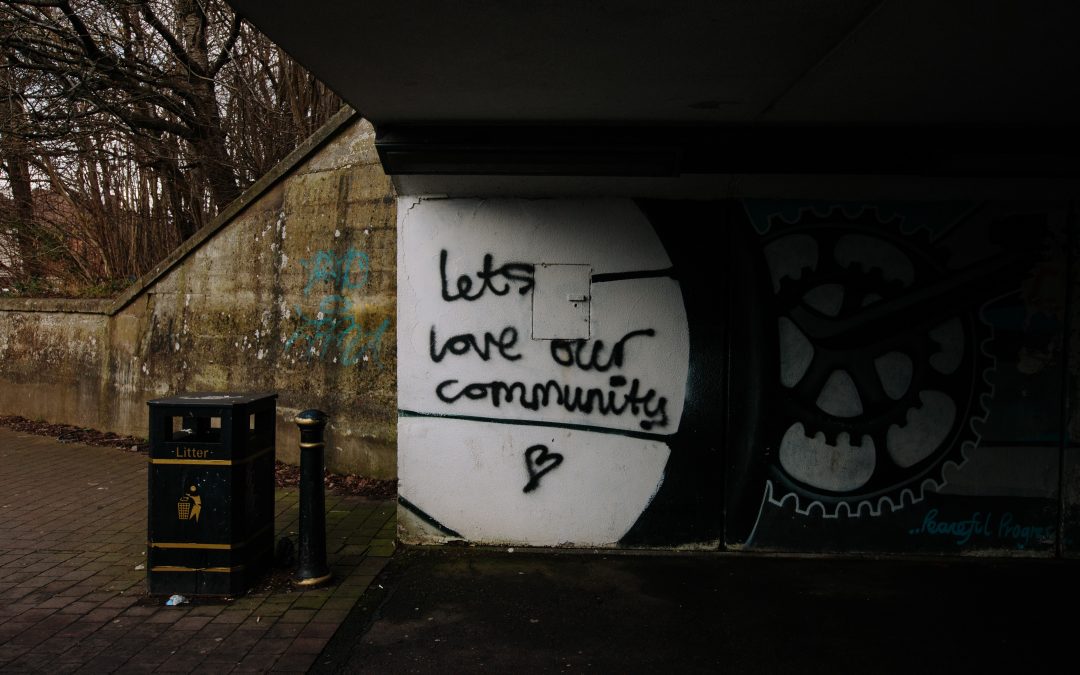
How to Start a Brand New Online Community, Even Without Technical Experience
One of my wonderful members (find out more about FREE membership here) wrote in with an interesting question:
“I’m concerned about my lack of technical experience that emerged as I was enjoying listening to ‘People Powered: How communities can supercharge your business, brand, and teams.‘
I wonder, how do I prioritize and build my initial business technical systems that can grow into an interactive community of people with my business as the hub?”
Stephen Gaylord
The Answer:
The most critical skill in building a community, no matter the niche, is to provide a space for your audience to share their specialized expertise and insight (even if you don’t share that expertise with them.)
A community is a network of minds, who have insight, experience, and time to offer, and and our job is to create a place where they can thrive.
Now, there are some communities that require technical expertise – such as developer relations – but don’t worry, though, there is good news! While you’ll need a simple understanding of some topics, you don’t need to be an expert so create a community for experts.
Make sense?
For example, if you are building a community of engineers, you need to understand the needs, worries, pains, and goals of engineers…but you don’t need to be an engineer yourself. Hell, I helped build the Ubuntu community and I have never built an Ubuntu package, but I sought to understand their world and what they needed.
Here are some such industries that might take just a little more studying for when starting a community without tchnical experience:
- Hard sciences
- Computer engineering
- Open Source
- Crypto
But no matter what topic you choose for your community, always remember: the key, most important aspect of whether your community succeeds is NOT your technical skills in that niche.
Instead, it’s the well-matched VALUE you offer them over and over again.
So how are you supposed to build this value-matched community?
First, don’t just expect members to join just because you set the community up. (This isn’t Field of Dreams after all!)
To be sure you have a path of least resistance for members to join your community, you instead need to purposefully and intentionally build a journey for new members to take.
Luckily, I’ve already created a map for this process: it’s my Community Participation Framework discussed in my newest book “People Powered: How communities can supercharge your business, brand, and teams.”
Using this framework, the mission is to get the person on the left to get to the star, where they officially join your community.
The “on-ramp” experience is hugely important, and this is your lifeline to building a passionate community, even in a highly-technical niche. I cover this on-ramp in my video about five reasons people are not joining your community.
Once you get your members past the initial on ramp, they start as Casual community members, then becoming Regulars, and a few will eventually become Core members.
(To learn more about what to do after members join, read this article.)
If you have the patience and strategy to put this framework into action, you’ll build a great community with or without technical experience – I promise you this.
However, it’s also important to discuss the logistics of building this community.
How are you supposed to bring this community and framework to life?
There are a lot of moving parts to a living, breathing, and thriving community, that’s why it’s important to choose the best platforms and make your life easiest from the very beginning.
Luckily, our modern times have made blogging, community hosting platforms, and every other tool you’ll need easy to use, even if you have no experience with them before.
My advice for building the community you need is to start simple.
There are actually only two basic tools you need to run a basic community!
1) A website
2) A communication platform to bring members together
There are lots of options you have when choosing a service for both of these tools.
I personally suggest using a pre-hosted service such as WordPress or Discourse because this will keep everything simple for you and reduce unnecessary headaches.
Then, there’s an additional tool (my secret weapon) that will make starting a community without technical experience simpler.
Synchronizing your data and services.
This simply means that all the “tools” in your community toolbelt will automatically communicate and act without you manually doing everything.
Sounds like a recipe for a stress-free community, no?
Here’s an example: If you want a new community sign-up to automatically sync with your other platforms, synchronizing them with a service like Zapier will make it all easy as pie.
Want to dig deeper? Well, check out my video on this topic:
Best of luck!
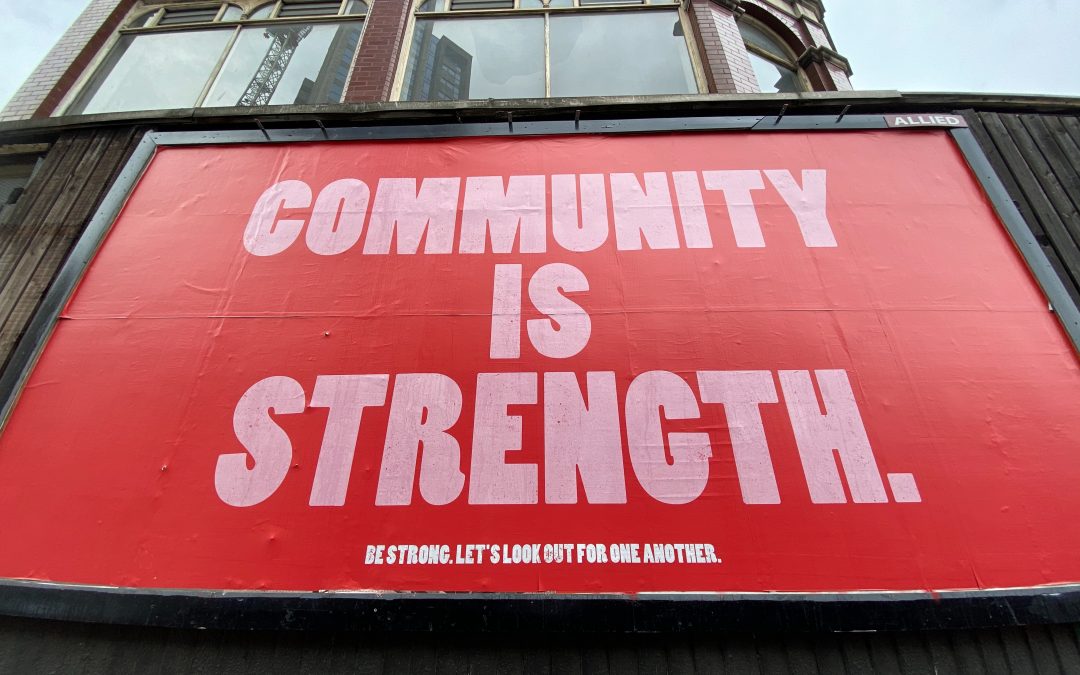
Announcing The ‘People Powered’ Book Club
Back in November I released ‘People Powered: How Communities Can Supercharge Your Business, Brand, and Teams’. The book delves into why there is a demand for communities and provides a comprehensive blueprint for how to create a community and integrate it into a business.
Importantly, the book also covers “what not to do” so you can swerve around many of the common mistakes and problems I have seen in my twenty-two year career and working with hundreds of companies and communities.
The book has been doing well, netting five star reviews on Amazon and four-and-a-half stars on Goodreads, winning a Business Book Awards 2020 award, and getting very positive reviews from press and readers alike.
This is when an idea was conjured up by my friends Monica and Bill.
Wouldn’t it be cool to read ‘People Powered’ together…as a community… and then meet each week where you can ask questions directly to me (Jono) and we can explore the material together?
Group learning is always more fun than sitting alone with a book and no-one to ask questions to.
It provides a place where you can explore ideas, ask questions, better understand the concepts, test ideas, challenge your assumptions, and overall grow and learn faster.

I freaking loved the idea, and the ‘People Powered’ Book Club was born.
What’s more, it is entirely FREE to join.
The idea is devilishly simple.
When you sign up to join the book club (which is entirely FREE) you will be invited to join a Slack channel for our community. Here you can settle in, get to know everyone, ask questions, and have fun.
Each week we will all read the same chapter from ‘People Powered’. This will keep everyone on a schedule, and as you are reading the book you are welcome to discuss it in the Slack channel with the rest of the community.
Then, each week on a Tuesday, we will all meet together and we will dig into the chapter. You can ask me (Jono) questions, we explore ideas further, discuss implementation, and more.
The entire book club will take place over 11 weeks (one week for each chapter).
Interesting in joining?
Click here here to register.
Act quick though: registration closes on the 2nd October 2020.

How to Reward Community Members, Even Without a Huge Budget
Today, I want to briefly discuss one of my favorite community-building tactics: amazing reward systems. How do you use rewards to celebrate amazing work from your members? How do you reward community members, even without a huge budget?
I get a lot of questions about this topic. Many times, people want to know how they can use rewards to keep their community members interested, even with a measly or nonexistent budget for doing so. After all, it can get pricey sending out free t-shirts internationally.
The reason rewards work so well is that, much like Pavlov’s famous dog, we as humans love to be rewarded for our good behavior, and when we can repeat this good behavior for a couple of months, it gets sealed into our brains as a habit.
Digging Into Rewards
Rewards are a powerful way to nurture your community as it flourishes, however, not all rewards are equal for people building communities. To understand why, let’s first look at my Community Participation Framework from my latest book, “People Powered: How communities can supercharge your business, brand, and teams.”
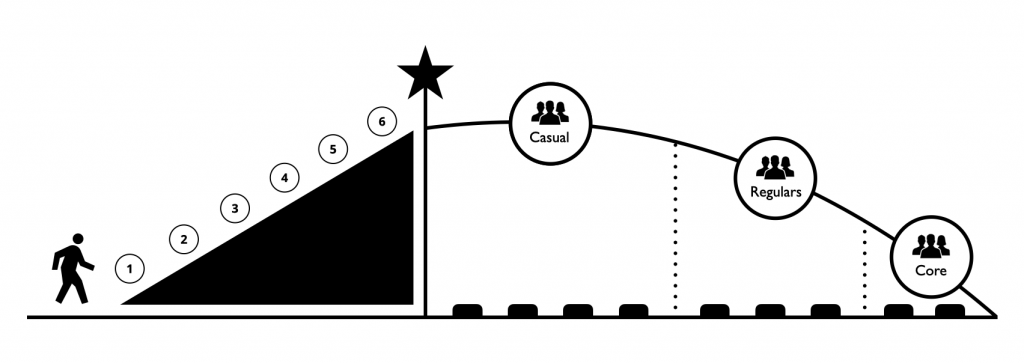
This framework shows you how to take a new community member from a Casual member to a Regular member, and then on to a Core member. With each bump in community level, there is also a bump in your member’s level of participation. But how do you move them from Casual through to Core?
You can see under these three community levels, there are little black bumps. Those are the rewards for your members!
In other words: when someone does something, they get something cool.
Do you know why rewards are so powerful for communities? It is because rewards encourage the kinds of behaviors you want to see in your community members – the more they participate and get rewarded, the more their behavior changes.
For example:
- Do you want casual members to read more content? Reward them for it.
- Do you want regular members to generate material and get more active? Reward them for it.
- Do you want better peer reviewed code contributions? Reward them for it.
Habitual behaviors are enormously influenced by rewards!
Two types of rewards: Intrinsic and Extrinsic
So, this all sounds great, but kinds of rewards should I send people?
Well, there two types. Let’s dig into each.
Extrinsic rewards
This is what most people think of when they think of physical perks from a community. Here, you are sending your community members physical goods such as swag and other merchandise.
For example:
- T-Shirts
- Challenge Coins
- Gadgets
- Stickers
- Water Bottles
- Treats
- Travel Gear
- Trophies
The key to making extrinsic rewards work is buying high quality materials in bulk (cheaply) and shipping it to members (also very cheaply.)
However, if either of those things goes awry, you can end up costing your community a lot of money and time.
So, some tips:
- Avoid t-shirts: there are different cuts, sizes, and more that massively overcomplicates the process. You usually end up with a load of stock you can’t get rid of. Also, many t-shirts people make suck, so only make t-shirts that look cool.
- Focus on interesting, personalized swag that you can ideally put in an envelope to reduce shipping (e.g. Stickers, Challenge Coins etc.)
- Make sure your shipping is cheap and trackable. If it’s not, it is probably best to focus on intrinsic rewards.
- ALWAYS include a handwritten note. (But don’t use your normal signature, otherwise, people could forge it if you do!)
Tips aside, extrinsic rewards leave you more exposed to things going wrong. This is why I always prefer starting with the second sort of reward.. Intrinsic rewards.
Intrinsic rewards
In this reward system, you validate your members’ efforts without sending a physical product at all. Instead, you simply actively recognize the work they’ve done!
For example:
- Thank you emails
- Public forum recognition by saying something like “Congrats to ___, they have made some amazing contributions including X, Y, Z…”
- Inviting members to insider planning/team meetings
- Sending free “VIP” digital content such as e-books, courses, and more
- Giving them access to the “Batphone”; a direct contact email address that they can reach you and your team when needed
There are 2 main ways intrinsic rewards work for your community:
- Social recognition (such as public praise) is a form of validation, and validation is yet another form of reward!
- Creates social proof, making not only the rewarded member more inspired, but also his or her peers.
In Conclusion
I know this is all a lot to think about, so here’s a quick recap of my actionable suggestions for making rewards work for your community better.
- Start by deciding what behaviors you want members to take
- Break those behaviors into Casual, Regular, and Core categories, choosing 2 behaviors per category that you can recognize and reward
- Choose your rewards, both Extrinsic and Intrinsic
- Think about the most efficient way to implement your rewards once chosen (especially for extrinsic rewards that require logistics.)
Now go enjoy the uptick in community morale these tips will give you.
Want to find our more? Check out my video:

Catherine Gray on Enneagrams, Personality Tests, and Leadership Development
Many of us are striving for growth and success, but we don’t know which levers to yank to get the right results.
This is where Catherine Gray from The Trium Group comes in. She is an expert in a range of tools, such as Enneagrams, to evaluate what kind of personality you have, and then how to apply the right skills development to get the results you want.
Catherine offered to do an Enneagram for me, and it was a fascinating experience and very telling. I honestly thought the notion of a personality test was nonsense, and I was wrong.
As such, I was thrilled to bring Catherine on Conversations With Bacon. We dig into a raft of different areas including:
- What an Enneagram is, how it works, and how to read it.
- We explore my own Enneagram as an example, and what it told us.
- The role of other personality tests, how they work, and if they are effective.
- How to take the results from a test and map out your next set of goals and targets.
- Common challenges leaders face and how they are resolved.
- The role of vulnerability and ego in leadership.
- Guidelines and recommendations from a proven leadership coach.
- And much more…
This is a really informative, illuminating, and insightful discussion. Be sure to give it a listen.
Communities are changing the way we do business. Discover a concrete framework for building powerful, productive communities and integrating them into your business. My new book, ‘People Powered: How communities can supercharge your business, brand, and teams’, is out now, available in Audible, Hardcover, and Kindle formats.
Thank you to always rocking Marius Quabeck and NerdZoom Media for mixing the show!
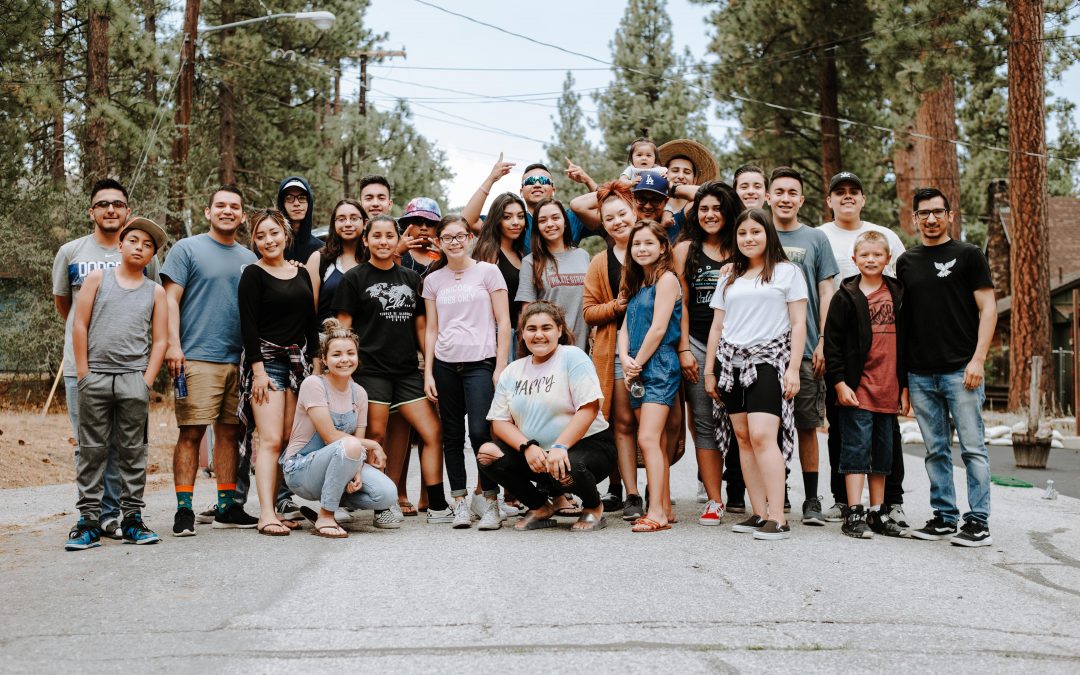
David Hornik on the People and Culture of Venture Capital and Startups
For those playing along with Silicon Valley bingo, there is an enormous amount of change going on in startups, venture capital, and beyond. This has been heightened by the impact of COVID-19 on founders, startups, and investors.
David Hornik has been around the investment world for a long time as a general partner at August Capital, creator of The Lobby conference, and a lecturer at Stanford.
I first met David at The Lobby and was taken aback by how different he was from the stereotypical power player VC who is only ever fixated on hyperactive growth. He is a fun, vivacious, creative powerhouse who is able to balance a keen knowledge of business with the reality of how people think, work, and collaborate. While he is focused on getting results he always pulls his work back to the human condition, which unsurprisingly resonates with my perspectives on the world. He is also a hoot to hang out with.
As such, I was thrilled to bring David on Conversations With Bacon. We dig into a raft of different areas including:
- The impact of COVID-19 on hiring, spending, how much runway businesses need.
- The personal impact of COVID-19 on families, hobbies, and commuting.
- The design of The Lobby and how he managed to get professionals from a broad range of backgrounds to truly come out of their shells
- How Silicon Valley has shifted and adjusted over the years and the role of ego.
- How much money do you really need, how do you spend it, and how can you annoy financial advisers.
- His love of Broadway and how he supports up and coming shows.
- The role of diversity in business and how to impact systematic racism.
- And much more…
This is a really fun, engaging, and insightful discussion. Be sure to give it a listen.
Communities are changing the way we do business. Discover a concrete framework for building powerful, productive communities and integrating them into your business. My new book, ‘People Powered: How communities can supercharge your business, brand, and teams’, is out now, available in Audible, Hardcover, and Kindle formats. Be sure to check it out, and grab the People Powered Plus pack with free templates, bonus content, and over $2000 of special offers.
Thank you to Marius Quabeck and NerdZoom Media for mixing the show!

Bitesize: Emily Musil Church from XPRIZE on using Field Trials
Emily Musil Church explains the logistics of how XPRIZE ran field trials with thousands of Google Pixel tablets across hundreds of remote villages.
Listen to the full episode here.
Communities are changing the way we do business. Discover a concrete framework for building powerful, productive communities and integrating them into your business. My new book, ‘People Powered: How communities can supercharge your business, brand, and teams’, is out now, available in Audible, Hardcover, and Kindle formats. Be sure to check it out!

Bitesize: Liz McCabe from Stinson Advising reviews the common difficulties many executives have
Liz McCabe from Stinson Advising discusses the tactical and internal patterns that she sees working with CEOs across many different industries.
Listen to the full episode here.
Communities are changing the way we do business. Discover a concrete framework for building powerful, productive communities and integrating them into your business. My new book, ‘People Powered: How communities can supercharge your business, brand, and teams’, is out now, available in Audible, Hardcover, and Kindle formats. Be sure to check it out!

Marik Hazan on Psychedelics and Venture Capital
When I say the word “psychedelics”, you probably think of hazy people tripping on suspicious substances at a Grateful Dead concert. Well, the story is much deeper than this, and it is a very interesting story indeed.
It turns out there has been an enormous amount of research into psychedelics and their role in a variety of illnesses and conditions. So much so, a new revolution is forming to build businesses around a future in which psychedelics could be available on the market.
One person spearheading this revolution is Marik Hazan, founder of Tabula Rasa Ventures. I was thrilled to have Marik come on Conversations With Bacon to dig into the story, the science, the business and more.
In this show we dig into a broad swathe of topics including:
- The impact of psychedelics on mental health, trauma, PTSD, and more
- The culture of psychedelics and how it is changing
- The difference between medical and recreational use of psychedelics
- The role of scientific trials and the data about psychedelics efficacy
- How addictive different psychedelics compounds are
- How the venture and startup market is exploring psychedelics
- The impact of stigma in building credibility around new industries
Communities are changing the way we do business. Discover a concrete framework for building powerful, productive communities and integrating them into your business. My new book, ‘People Powered: How communities can supercharge your business, brand, and teams’, is out now, available in Audible, Hardcover, and Kindle formats. Be sure to check it out, and grab the People Powered Plus pack with free templates, bonus content, and over $2000 of special offers.
Thank you to Marius Quabeck and NerdZoom Media for mixing the show!

Mike Dillard on Effective Marketing, Gurus, and Growth
In recent years, there has been an explosion in digital marketing. Bold claims of making thousands of dollars a day have been perpetuated by self-proclaimed marketing gurus. It all seems a bit much to my cynical British eye.
This is why I was thrilled to have Mike Dillard come on Conversations With Bacon. Mike has spent years in the trenches running a number of businesses, and when I went on his podcast a little while back, he was a refreshing change from the usual marketing gurus.
In this show we dig into a broad swathe of topics including:
- The importance of data and how to track it to get better results
- The role of copy and how to be a better copywriter
- Email marketing: is it still relevant in a world with too much email?
- Tai Lopez, his approach, and if it works
- The role of logic and emotion in purchasing products and services
- Brand marketing, familiarity, and trust
If you are interesting in marketing, or work in marketing today, you should definitely check out this conversation.
Communities are changing the way we do business. Discover a concrete framework for building powerful, productive communities and integrating them into your business. My new book, ‘People Powered: How communities can supercharge your business, brand, and teams’, is out now, available in Audible, Hardcover, and Kindle formats. Be sure to check it out, and grab the People Powered Plus pack with free templates, bonus content, and over $2000 of special offers.
Thank you to Marius Quabeck and NerdZoom Media for mixing the show!


